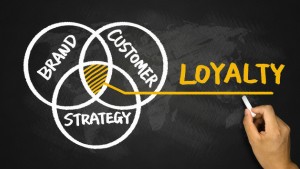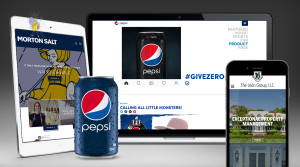We’re excited to introduce a new Brand Salsa series, “Brains Behind the Brands,” In each edition of the series, we will be shining the spotlight on one of our brand experts and getting their thoughts on a range of...
We’re excited to introduce a new Brand Salsa series, “Brains Behind the Brands,” In each edition of the series, we will be shining the spotlight on one of our brand experts and getting their thoughts on a range of topics, from new trends in the branding industry to advice they’d give someone working on building their brand.
Our first expert is Brittany Scott, Addison Whitney’s Creative Director. Brittany has extensive experience creating brands, specifically on the verbal branding side of the process. Below, we get a look inside the brain behind the brands:
When thinking of creative cues for a new name, where should organizations or products go for inspiration?
Companies tend to be laser focused only on their products and their competitors. While it is valuable to know your audience, one of the most inspiring exercises can be looking outside of your industry and observing what other brands are doing.
For example, if you are naming a sports car, don’t just focus on what’s happening within automotive naming, but expand out to other industries that may have similar audiences. For a sports car, you may find parallels in extreme sports, energy drinks, or luxury accessories. Use these observations to broaden your thinking and explore new ideas.
How can brands ensure that their corporate identity name will be built to last?
Changing a corporate identity can be a lengthy and costly process. To make your brand last as long as possible (and maintain all that equity you will soon build!), be sure your name is flexible enough to adapt to future growth. Starting a company with a name that is too limiting (ex: too descriptive of one product or service) may set you up for a name change in one, five or 10 years when you’ve expanded your offerings beyond this initial description.
This is why many companies use aspirational concepts instead of descriptive or functional ones. They try to convey the benefits they will deliver to their customers in the future. By envisioning results rather than products, you can create a name that extends and grows with your business.
Can you describe the feeling of seeing a name you created hit the market?
It’s always fun to see a product that we’ve named hit the shelves. Some products are easy to see and buy (for example, consumer goods like soft drinks or snacks). Others are harder to track down (like pharmaceuticals or technology offerings) but still equally exciting for my team when they launch.
At Addison Whitney, we have a whole display at the office of products we’ve named (the smaller ones – unfortunately we can’t fit cars and appliances in there!).
What do you see as the “next big thing” in naming – either in the pharmaceutical industry or consumer market?
The biggest trend in pharmaceutical naming right now is simplicity. Physicians and consumers are overwhelmed with complex names with too many weird letter combinations. Even brands designed as “empty vessels” (names not built around a real word or concept) are becoming increasingly easier to say and spell. While the pharmaceutical market is still very crowded and we have to use caution to ensure safe prescribing, we hope to continue to work towards simpler, more sophisticated names that appeal to all target audiences.
For consumer products, I am loving the trend towards what I’ll call “clever functional.” Similar to pharmaceuticals, consumers want simple, telegraphic names that are easy to remember. But consumers also aren’t stupid. So savvy companies are creating descriptive names with a twist. One of my favorite new product names is “Innovasian Cuisine.” It’s easy to understand and broad enough to encompass a growing product line. It makes me smile and is fun to say. I am also a fan of the brand name “Seeds of Change.” There are so many layers of meaning to this one, it really piques my interest and I think it appeals to consumers on an intellectual as well as emotional level. And let’s not forget about “Sweetos,” the new cinnamon sugar version of Cheetos. How perfect is this name?!? It’s an obvious extension of the Cheetos brand, but with a clever twist that functionally aligns to the product.
How important is it to take URL availability into account when creating a name?
Everyone wants to own the .com for their business. And for the right amount of money, many URLs are available for purchase. However, with the increasing ease of search and the increasing impatience of users, less and less people are typing in “www.YourName.com” to go to your site. Most are using a search feature to find information, so I think it’s better to focus your efforts on SEO (search engine optimization) than worry about your URL.
Don’t let URL availability deter you! If a single word URL is not available, adding a descriptive word or phrase is perfectly acceptable (Premier Hospital Solutions could be www.premierhospitalsolutions.com instead of just www.premier.com). And if you are naming a product or service, consider whether it even makes sense for it to have a standalone URL. Many products can nest under the master brand’s website, making it faster and easier for users to find them.
What to learn more about how you can build your brand? Let’s talk.










